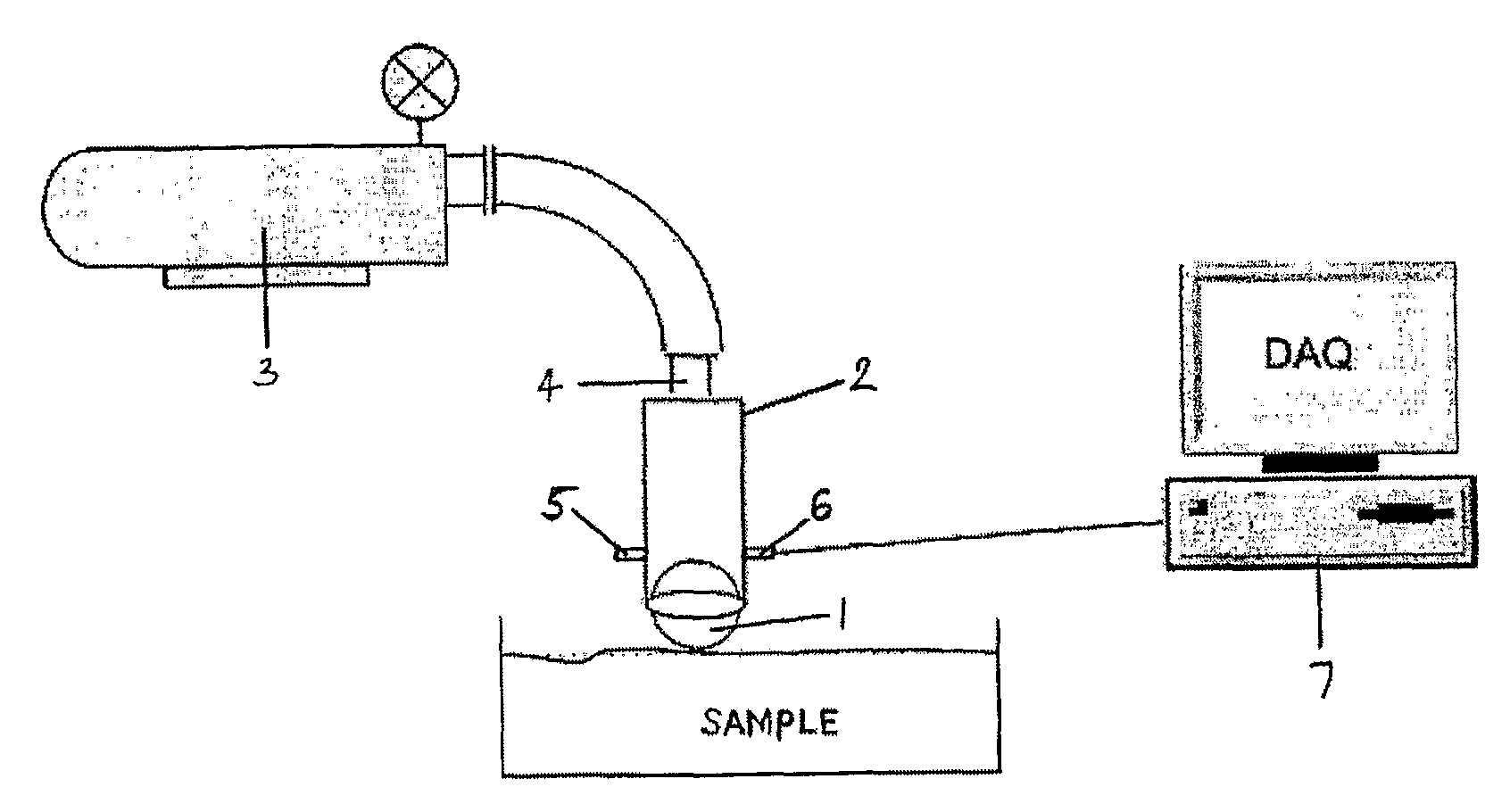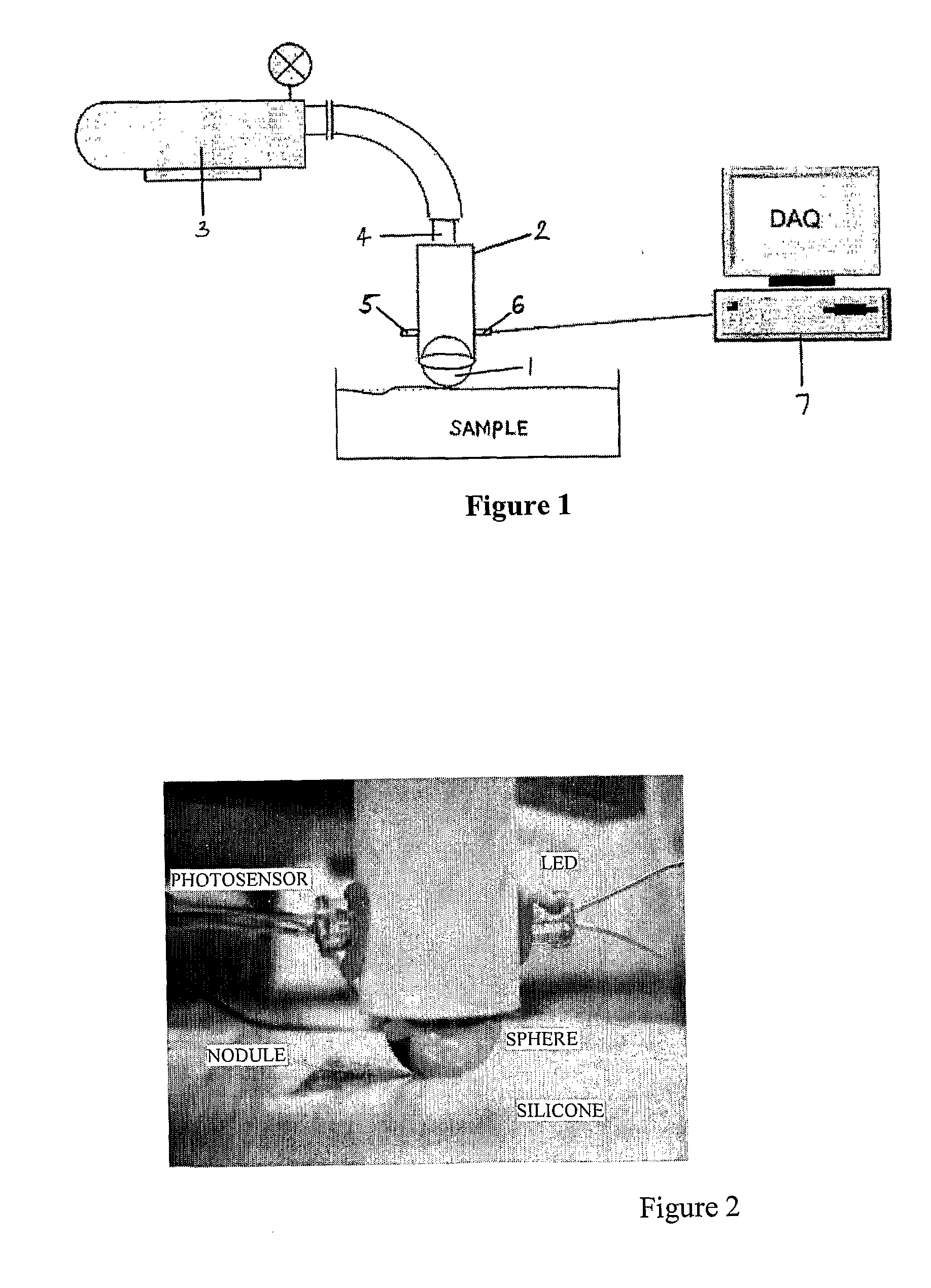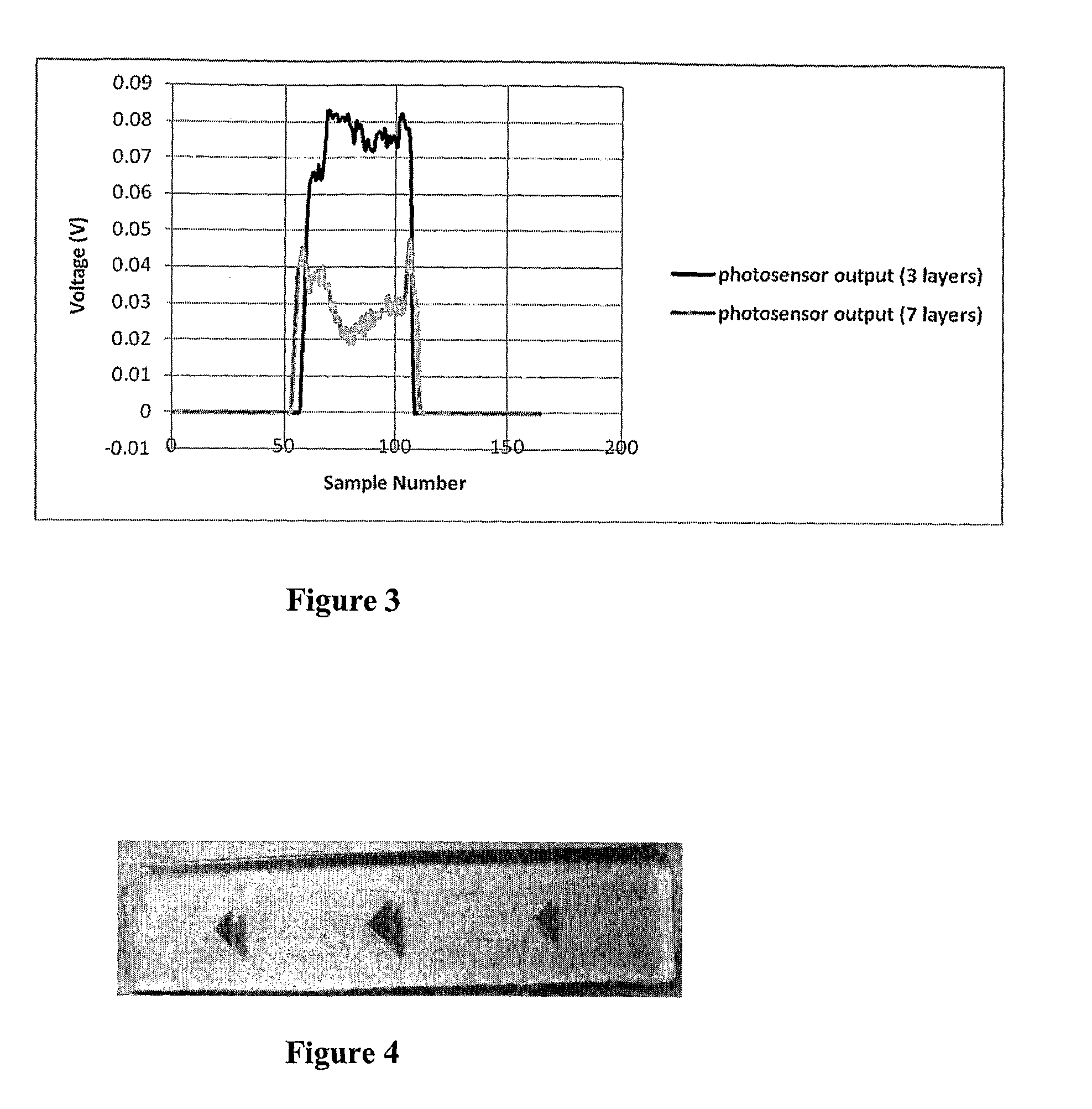Air cushion sensor for tactile sensing during minimally invasive surgery
a sensor and air cushion technology, applied in the field of sensor for providing force feedback, can solve the problems of difficult to sense the actual contact force between the tool and the tissue, the difficulty of the mis, and the inability of surgeons to palpate and feel the organs with their hands, so as to achieve accurate steering and less risk of tissue damag
- Summary
- Abstract
- Description
- Claims
- Application Information
AI Technical Summary
Benefits of technology
Problems solved by technology
Method used
Image
Examples
example 1
[0099]The sensor is a “sphere on air cushion” sensor which can be used as a stiffness and force sensor in MIS and can be used to measure the spatial stiffness / force distribution of soft tissue and identify tissue abnormalities during MIS. The sensor uses a freely moving sphere that can rotate on the spot and can be moved in any direction along a sample surface. More specifically, the sensor uses a sphere floating on an air-cushion to reduce friction and applies pressurized air onto the sphere to deform the tissue while the sensor is rolled over the surface.
[0100]FIG. 1 shows a sensor comprising a 9 mm sphere 1 that is rolled over soft tissue to detect any abnormalities such as lumps. The sphere 1 is situated at the end of a hollow cylindrical shaft 2 with an inner diameter of 11.5 mm and “floats” on a cushion of air generated by an influx of air from a compressor 3 through an inlet 4 at the distal end of the shaft 2. An LED 5 and a photosensitive detector 6 are positioned in the sha...
example 2
[0118]Alternative Sensor
[0119]FIG. 9 shows an alternative sensor. The sensor comprises a 9 mm sphere 11 that is rolled over soft tissue to detect any abnormalities such as lumps. The sphere 11 is situated at the end of a hollow cylindrical shaft 12 with an inner diameter of 11.5 mm and “floats” on a cushion of air generated by an influx of air 13 from the distal end of the shaft 12. A light emitting fibre 14 and a light collecting fibre 15 are positioned on the shaft walls opposite each other just above the top of the sphere 11. Light is emitted from the light emitting fibre 14, is reflected off the sphere 11 and is collected by the light collecting fibre 15. The light emitting fibre 14 is connected to a light source, such as an LED or Laser. Light from the light source is transmitted through the light emitting fibre 14 onto the sphere 11. The light collecting fibre 15 is connected to a light sensitive sensor, such as a photo detector, light sensitive transistor or a light sensitive...
example 3
[0120]FIG. 11 shows another alternative sensor which is a variation of the sensor of Example 2. The sensor comprises a 9 mm sphere 11 that is rolled over soft tissue to detect any abnormalities such as lumps. The sphere 11 is situated at the end of a hollow cylindrical shaft 12 with a diameter of 11.5 mm and “floats” on a cushion of air generated by an influx of air 13 from the distal end of the shaft 12. A light emitting fibre 14 and a light collecting fibre 15 are positioned on the shaft walls opposite each other both just above a prism 16 and 17 respectively. Light that is shone from the light emitting fibre 14 is reflected off the prism 16 and has a trajectory which is perpendicular to the shaft walls. When the light beam reaches the prism 17 it is reflected straight onto the light collecting fibre thus generating an uninterrupted beam across the cylinder. As the sphere moves along the shaft walls, this beam is partially or fully interrupted which allows the light collecting fib...
PUM
 Login to View More
Login to View More Abstract
Description
Claims
Application Information
 Login to View More
Login to View More - R&D
- Intellectual Property
- Life Sciences
- Materials
- Tech Scout
- Unparalleled Data Quality
- Higher Quality Content
- 60% Fewer Hallucinations
Browse by: Latest US Patents, China's latest patents, Technical Efficacy Thesaurus, Application Domain, Technology Topic, Popular Technical Reports.
© 2025 PatSnap. All rights reserved.Legal|Privacy policy|Modern Slavery Act Transparency Statement|Sitemap|About US| Contact US: help@patsnap.com



